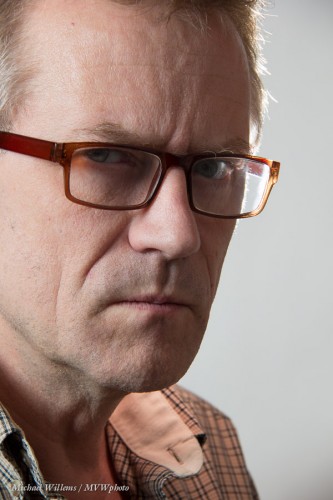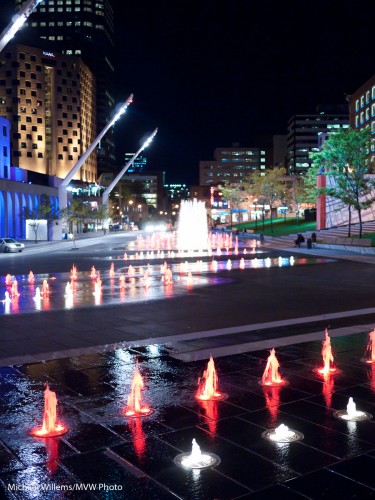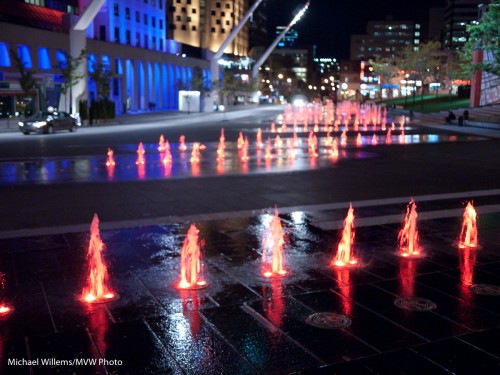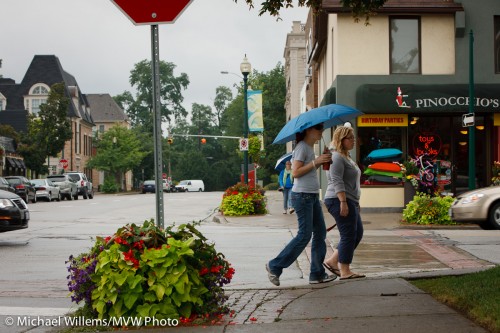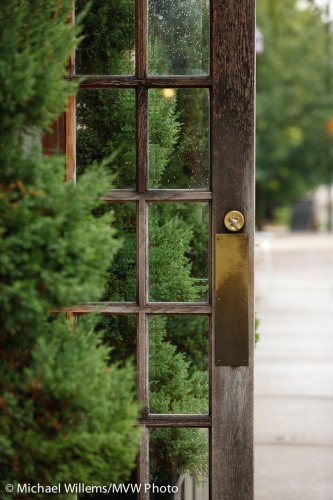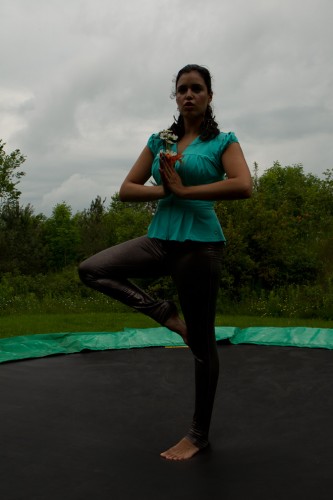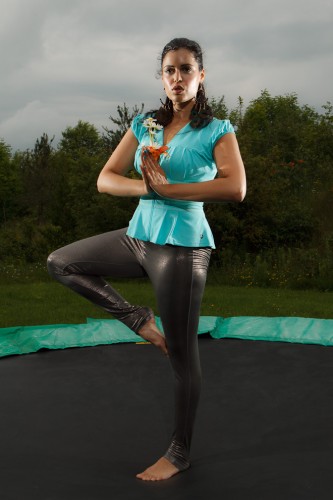You have heard, perhaps, of the Inverse Square Law. I hope you have. Because it is rather important in photography.
The Inverse Square Law says that the intensity of light shining on an object from a light source decreases with the square of the distance of the light source to that object.
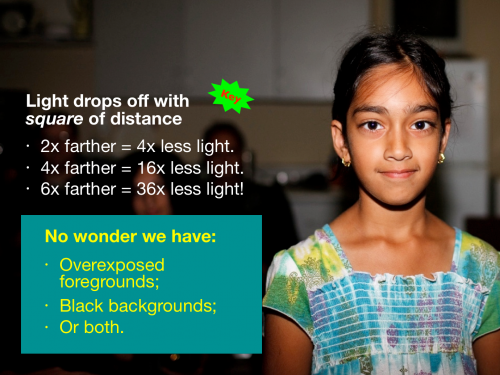
You can see what this means for us in practice: dark backgrounds if we aim a light forward from where we are (say, a pop-up flash). If the background is ten times farther away than your subject, it gets 100 times less light. Solution: do not have the light where your camera is. Or bounce. Or use several flashes. Or use ambient light also (“dragging the shutter”).
Important note: It is important to realize that this applies to the distance between light emitter and subject. Not the distance between you and the subject! (If you find this hard to visualize, consider this: when you back away while looking at a Caucasian, he or she becomes a smaller Caucasian to you, not an African-American).
Other than dark backgrounds, what else does the inverse square law mean to you in practice? This, for instance:
- If you move a studio light twice as far from a subject, you lose two stops of light (2 squared = 4, and two stops equals a factor of four).
- If you move it 41% farther, you lose just one stop, since 1.41 is the square root of 2.
- To get one stop more light, move the light closer by 30%, to 70% of its previous distance, since 0.707 is the square root of 0.5).
So knowing a little math, geometry and physics comes in handy. I speak not as an engineer, but as a photographer. I can move a studio light into the right position to get a stop more, or a stop less, light without metering.
And now, so can you. You are welcome.

